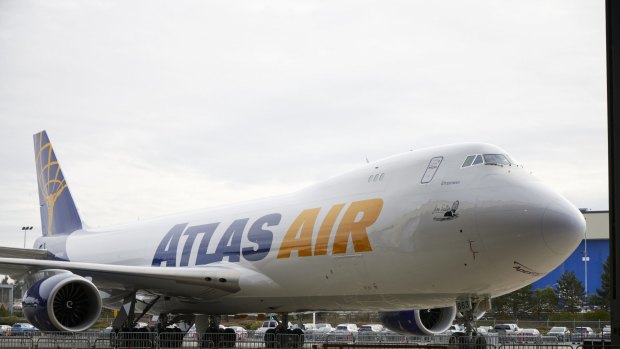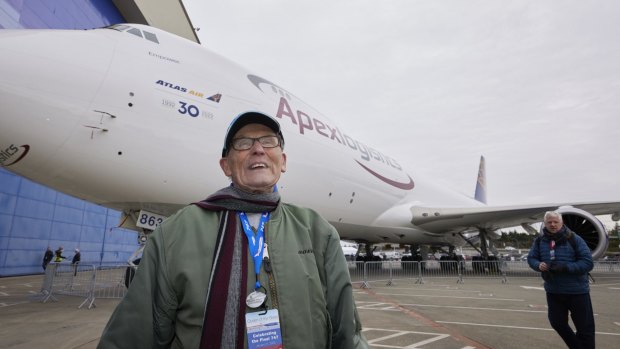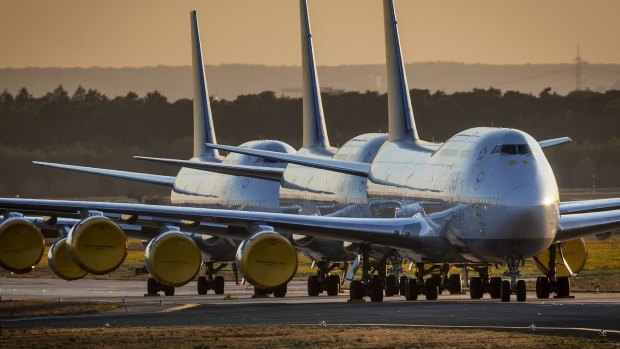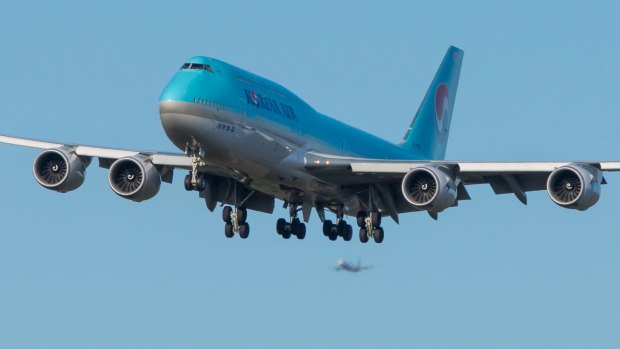This was published 1 year ago
Which airlines still fly jumbo jets? The 747 isn't quite dead yet
By Michael Gebicki
We're approaching the final curtain call for the Boeing 747. The 1574th and last of the giants rolled off the assembly line in Everett, Washington on December 6, 2022, and was delivered to Atlas Air Worldwide Holdings, a US air freight operator, at the end of January 2023. In the audience for the handover was John Travolta, a pilot and long-time fan of the world's first jumbo. Over a lifetime that began with its first paying passengers in 1970, the 747 has carried over 3.5 billion passengers, from tourists headed for a jaunt in Bali or the Caribbean to US presidents travelling to summit talks aboard Air Force One.
It's revolutionised air travel, ushering in an era of cheap airfares that has opened the world to mass travel. During that time it made some spectacular flights, including a Qantas 747-400 which flew non-stop from London to Sydney in 1989, a distance of 18000 kilometres which took 20 hours and 9 minutes, although this was a delivery flight with no passengers or freight aboard.
The 747 has changed with the times. In the early days, several airlines installed plush lounges that took up the entire upper deck, complete with swivel chairs, sofas and timber-panelled bars. Most of these lounges were for the exclusive use of first and business class passengers, although Continental Airlines had a lounge on the main deck that was open to all. They didn't last long. Once airlines woke to the fact that the lounges were taking up valuable room that could be used to generate revenue, their days were numbered, and the upper-deck lounge phenomenon petered out in the 1970s, although it continues in modified form aboard the Airbus A380.

The final Boeing 747, a freighter, at Boeing's assembly plant during a delivery ceremony to Atlas Air in Everett, US last month. Credit: AP
The 747 has also had an incredible safety record despite being involved in disasters such as the Tenerife incident in the Canary Islands when two 747s collided on the runway, and a Japan Airlines 747 that suffered explosive decompression in mid-flight, the two worst incidents in commercial aviation history that each took the lives of more than 500 people.
But big, four-engine passenger aircraft are headed for the scrapheap. At a time when aviation fuel is an increasing component in airlines' operating costs, the future belongs to more fuel-efficient twin-engine aircraft that can fly further than the jumbos, at lower cost per passenger. Qantas retired the last of its 747s in 2020, along with British Airways and KLM, several years after most US, Asian and European airlines had already put theirs out to pasture.
Although the 747 is doomed as a passenger carrier it will live on in our skies for some time to come, primarily as a freighter, an ironic twist since Boeing designed the aircraft to be easily adapted to a cargo carrier in case demand for the passenger version of the aircraft stalled.

Desi Evans, 92, at the delivery of the final 747. Evans worked on the first ever jumbo jet more than 50 years ago.Credit: AP
Which airlines still fly the 747?
If you want to rekindle memories of flying aboard the world's first jumbo, your first and best choice is Lufthansa. The German carrier operates more passenger 747s than the rest of the world's airlines combined, with eight 747-400s and 19 747-800 models still flying. All those aircraft are being used on Lufthansa's long-haul routes in East Asia, South Africa and North and South America.
Lufthansa's 400 series 747s are currently operating between Frankfurt and Chicago, New York, Shanghai, Seoul, Bengaluru, Beijing and Washington. In the past routes have varied with the seasons and you can expect to see routes come and go as demand rises and falls. The airlines' 747-800s are currently operating between the airline's main base in Frankfurt and Tokyo, Johannesburg, Singapore, San Francisco, Los Angeles, Sao Paolo, Mexico City, Miami and Buenos Aires.

Lufthansa jumbo jets parked in Frankfurt during the pandemic. Credit: AP
South Korean carrier Asiana has just one Boeing jumbo still carrying passengers, a 747-400 model delivered to the airline in 1999, now operating flights from Incheon to Shanghai and Changchun in north-eastern China but also to Paris' Charles de Gaulle as recently as early January 2023. With that many years on the clock it's unlikely the Asiana 747 will be in the air much longer.
Korean Air has 10 747-8 passenger models in its fleet. Korean Air's 747-8s currently fly between Seoul and Honolulu, Tokyo, Moscow, Atlanta, Shanghai, New York, Osaka and Shanghai. Baby of the fleet is five-year-old HL7644, which has the same configuration of six first-class seats, 48 business class and 314 economy seats as the rest of the airline's 747-800s.
Air China has a fleet of five passenger-carrying Boeing 747-400s and two 747-800s, although they're operating few flights these days according to online flight trackers, mostly between Beijing and Guangzhou.

Korean Air still has 10 Boeing 747 jumbo jets in service.Credit: Getty Images
See also: The game-changing planes we'll soon be flying on board
See also: Superjumbo comeback: The airlines still flying A380s to Australia
Sign up for the Traveller newsletter
The latest travel news, tips and inspiration delivered to your inbox. Sign up now.